You are viewing ARCHIVED content published online before January 20, 2025. Please note that this content is NOT UPDATED, and links may not work. Additionally, any previously issued diversity, equity, inclusion or gender-related guidance on this webpage should be considered rescinded. For current information, visit https://www.blm.gov/blog.
Righting a Wrong: Restoring Lands to the Leech Lake Band of Ojibwe
Cass County, Minnesota, is known for its rich history, abundant natural beauty, and renowned fishing. It also is the location of an injustice that is finally being righted.
In the mid-1800s, the Ojibwe people ceded millions of acres to create what is now Minnesota for a permanent home on the Leech Lake Reservation, which was established through treaties and executive orders. However, subsequent policies and laws eroded and fragmented the reservation, resulting in less than five percent of the treaty-guaranteed lands remain in trust today.
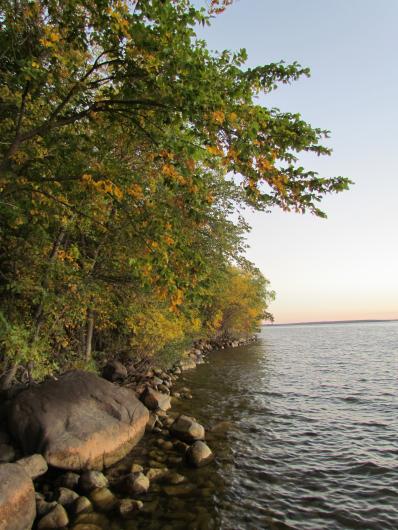
Ancestral homelands of the Leech Lake Band of Ojibwe also were lost through erroneous “Secretarial Transfers,” in which the Department of the Interior approved the transfer of Indian allotted lands without the consent of the original allotee heirs to the USDA Forest Service. Notably, thousands of acres of allotted lands within the Leech Lake Reservation were transferred between 1948 and 1959 without the proper consent of the rightful landowners. The Tribe maintains that these transfers resulted in it not having a sufficient land base to meet the current needs of its membership.
Steadfast advocacy by the Tribe to address this injustice is finally resulting in its ancestral lands being restored for future generations of the Ojibwe people. On December 23, 2020, the Leech Lake Band of Ojibwe Reservation Restoration Act (Public Law 116-255) became the law of the land. With the law’s passage, approximately 11,760 acres within Cass County managed by the Chippewa National Forest would be returned to Tribal ownership.
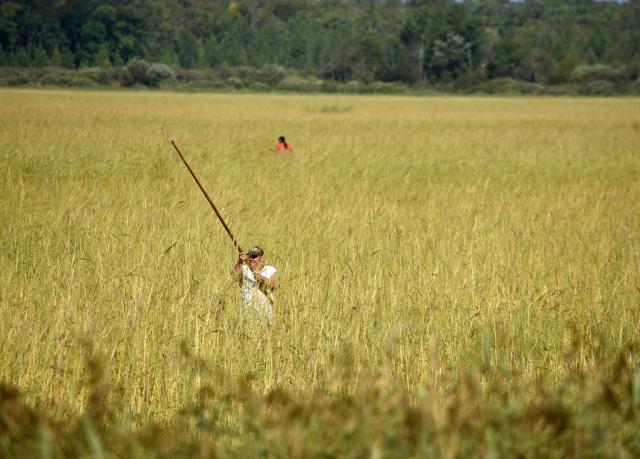
A Monumental Task
As the Nation’s public land surveyors, the Bureau of Land Management played a critical role in helping restore these lands to the Ojibwe people. Initially, surveyors from BLM Eastern States worked collaboratively with representatives from the Leech Lake Band of Ojibwe, Forest Service and the Bureau of Indian Affairs to research, identify and select the lands to be returned to the Tribe.
Land records uncovered further injustices. A records search of all Chippewa National Forest land holdings within Cass County revealed that the erroneous transfers were more widespread than initially estimated.
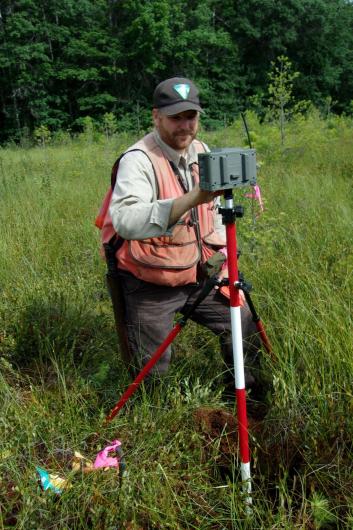
“My colleagues at the Bureau of Indian Affairs and I took on the immense task of reviewing the Secretarial Transfers in the records of the BIA’s Land Title and Records Office,” said BLM Indian Lands Surveyor Kenneth Roy. “Through this comprehensive review, we determined that an additional 4,400 acres were wrongfully transferred from the Leech Lake Reservation to the Forest Service.”
Congress is now considering new legislation that will allow the Forest Service to return these additional lands to the Tribe.
The 2020 law allows for the Leech Lake Band of Ojibwe to select certain lands within Cass County for land consolidation. Ten parcels selected by the Tribe required federal surveys to partition out existing recreational lease areas of the Chippewa National Forest. BLM cadastral surveyors have been on the ground surveying these lands since 2022.
Over the last three summers, BLM cadastral surveyor Brock Friermood joined Roy in establishing and marking the boundaries for the parcels identified for transfer. Staff from the Chippewa National Forest and Leech Lake Band of Ojibwe assisted with the field work.
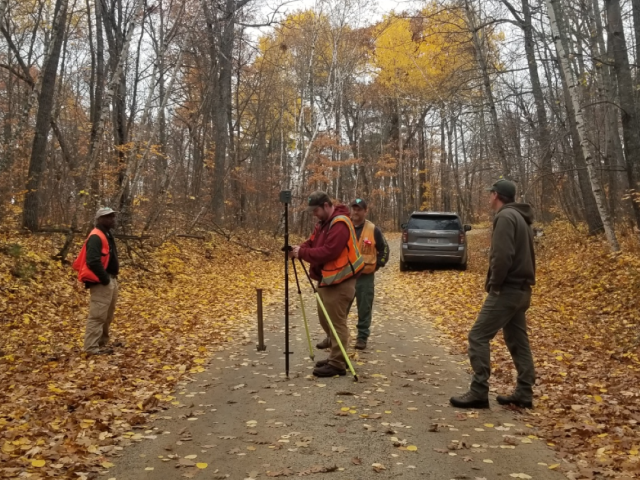
“You develop a certain rapport and relationship with others when spending that much time in the woods of northern Minnesota lugging equipment and things through woods, swamps, and hills and dealing with the abundant population of bugs,” noted Roy. “Working alongside our Tribal partners provided an opportunity for us as BLM cadastral surveyors to share our technical knowledge and methods while learning the cultural ways of the Ojibwe people.”
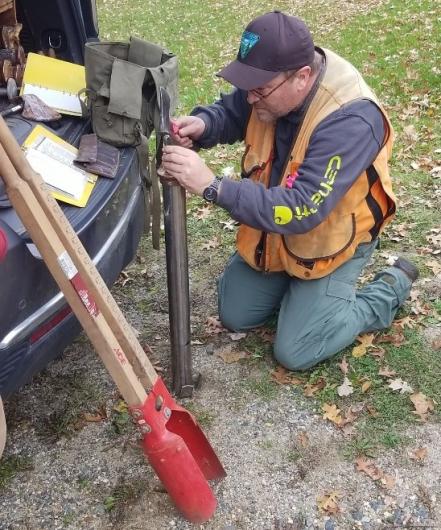
On June 20, 2024, the Forest Service announced the transfer of 11,778 national forest acres to the Leech Lake Band of the Ojibwe. With this transfer, the lands are now held in trust by the Bureau of Indian Affairs for the Tribe, which will determine how these lands will be used to meet the needs of present and future generations.
On the last day of field work, members of the Leech Lake Division of Resource Management joined Roy and Friermood in placing the final corner monument marking the exact location for the last tract surveyed by the BLM.

“Tribal members performed all the work marking the final boundary corner and dedicated the monument to the late Richard Robinson, director of the Leech Lake Division of Resource Management. He worked tirelessly to see these lands restored before his unfortunate passing recently,” stated Roy. “Personal items from Mr. Robinson were brought by his son to the dedication, and they will be documented in the official field notes of the survey. It was a symbolic event that I will never forget.”
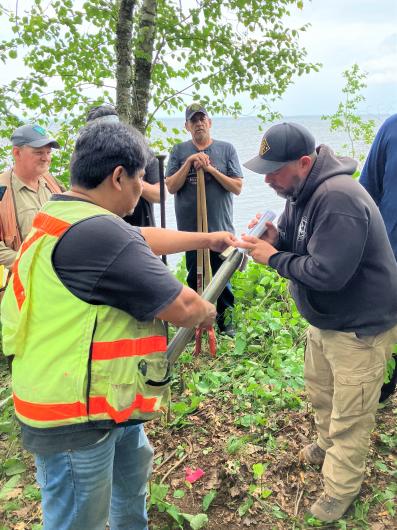
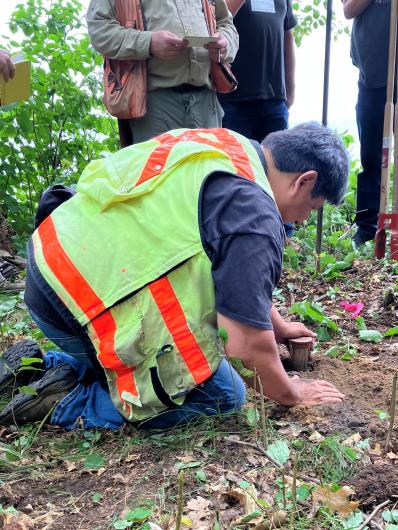
The last day of field work coincided with the Tribe’s celebration of the return of its ancestral lands. The commemorative ceremony, held on July 17, brought together community members to showcase the transferred lands, explain how the lands were lost and the impact on the Ojibwe community, and hear remarks from dignitaries, including the Leech Lake Band of Ojibwe Tribal Council, USDA Under Secretary for Natural Resources and Environment Homer Wilkes, Interior’s Assistant Secretary for Indian Affairs Bryan Newland, U.S. Senator Tina Smith, U.S. Congresswoman Betty McCollum, and Minnesota Lieutenant Governor Peggy Flanagan. Speakers noted that restoring these lands to the Leech Lake Reservation will help the Tribe address critical housing needs, expand access to sacred wild rice beds, and improve the relationship between the Ojibwe community and the Federal Government.
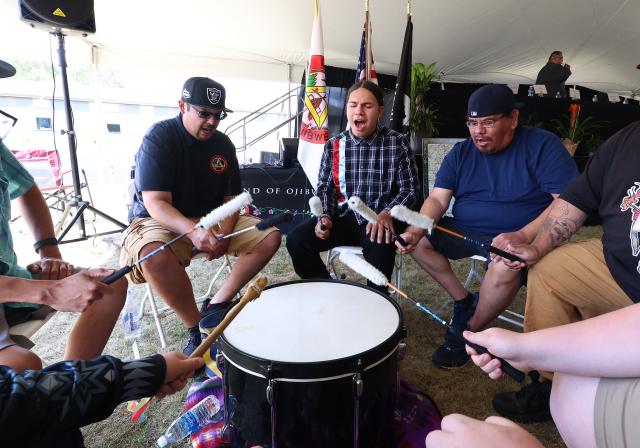
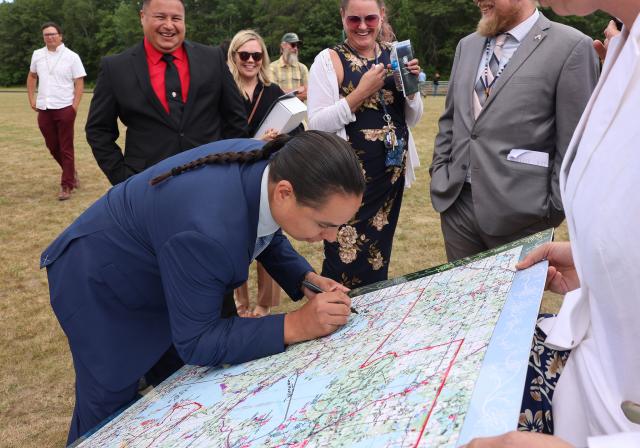
Roy shared that the ceremony commemorated Robinson and his contributions to return these lands to the Ojibwe people. Dave Bismark, representing Leech Lake Division of Resource Management staff, reflected on Robinson’s work and highlighted the previous day’s placement of the last survey corner monument. Bismark and his colleagues at the Leech Lake Division of Resource Management spent countless hours assisting BLM surveyors with the field work. Bismark began his remarks noting, “It was the one of coolest things I have ever done.”
The Work Continues
While the monuments have been set on the lands now returned to the Tribe, the BLM’s job is not done. BLM surveyors continue to prepare survey plats and field notes to document the correct acreage of the transfer. While not needed to legally return the lands to the Tribe, this extensive and important paperwork depicts the parcel boundaries and provides a detailed narrative description of the survey process. Once finalized, the plats and field notes will properly document the return of these lands to the Leech Lake Band of Ojibwe in official land records for perpetuity. The BLM anticipates filing the official plats for the 10 partitioned tracts next year.
About the BLM’s Cadastral Survey Program
The BLM’s Cadastral Survey Program is one of the oldest and most fundamental functions of the U.S. Government. The program has deep roots that go back two centuries, from the nation’s first surveys of public land after the Revolutionary War to current efforts to sustain the health, diversity and productivity of public lands. The Cadastral Survey Program is responsible for surveying all federal interest and Indian lands. The program’s work helps maintain legal structure for title ownership of land. The word “cadastral” is derived from cadastre, meaning a public record, survey, or map of the value, extent and ownership of land as a basis of taxation. These surveys provide public land managers and the public with information essential to correctly determining ownership rights and privileges and facilitating good land management decisions.
Kristen Peters, BLM Eastern States Deputy State Director for Communications
Related Stories
- Orphaned wells: BLM and its partners address centuries-old pollution
- BLM Cody’s Cara Blank recognized with Unsung Hero Award
- Jackson Hotshots sum-up season as one of success, family
- Eagle Scout service project enhances BLM's Fowl River Access Site
- BLM Wild Horse & Burro Program Adoption Experiences: Lifelong Dream of Owning a Mustang Comes True
Office
5275 Leesburg Pike
Falls Church, VA 22041
United States
